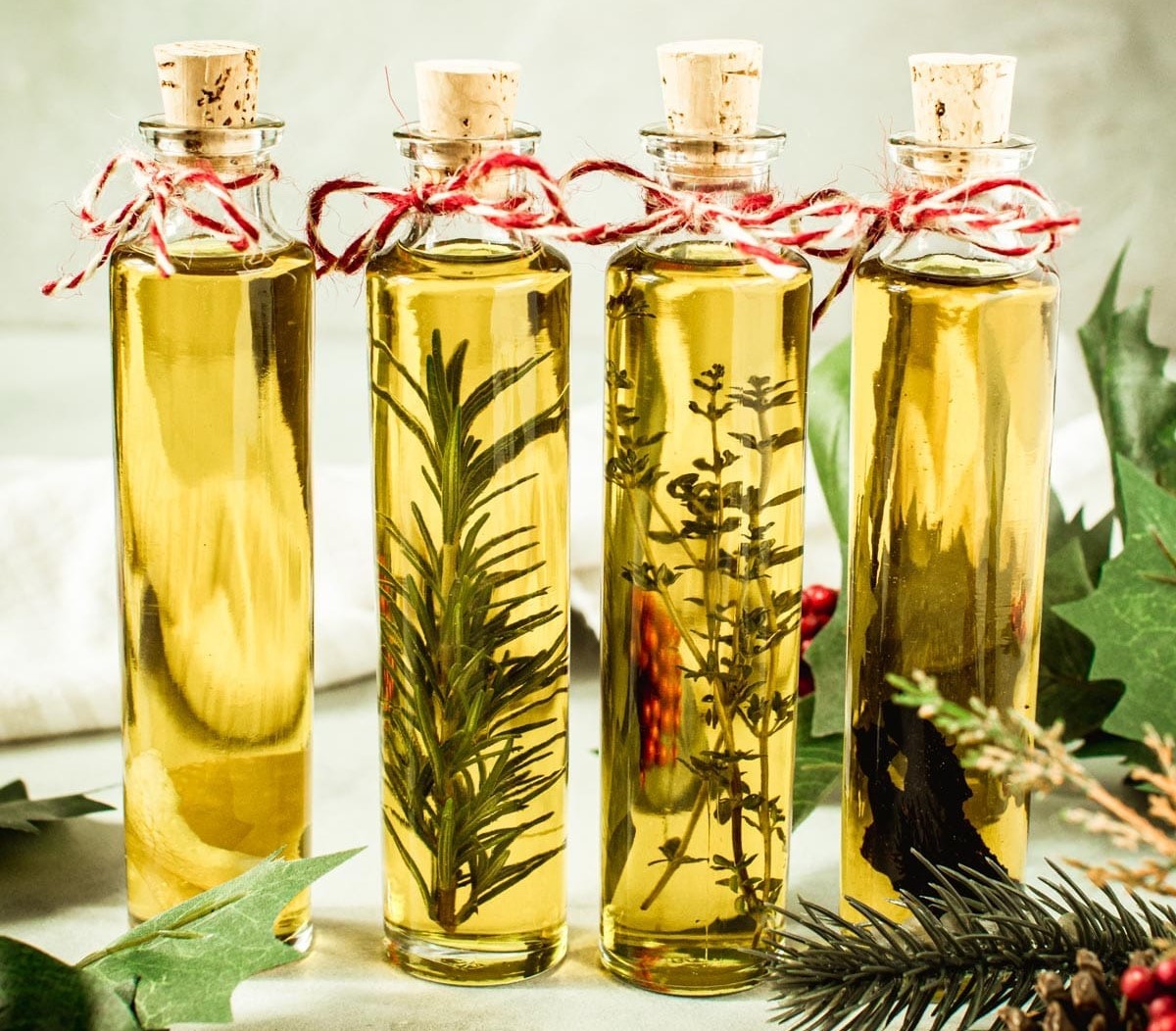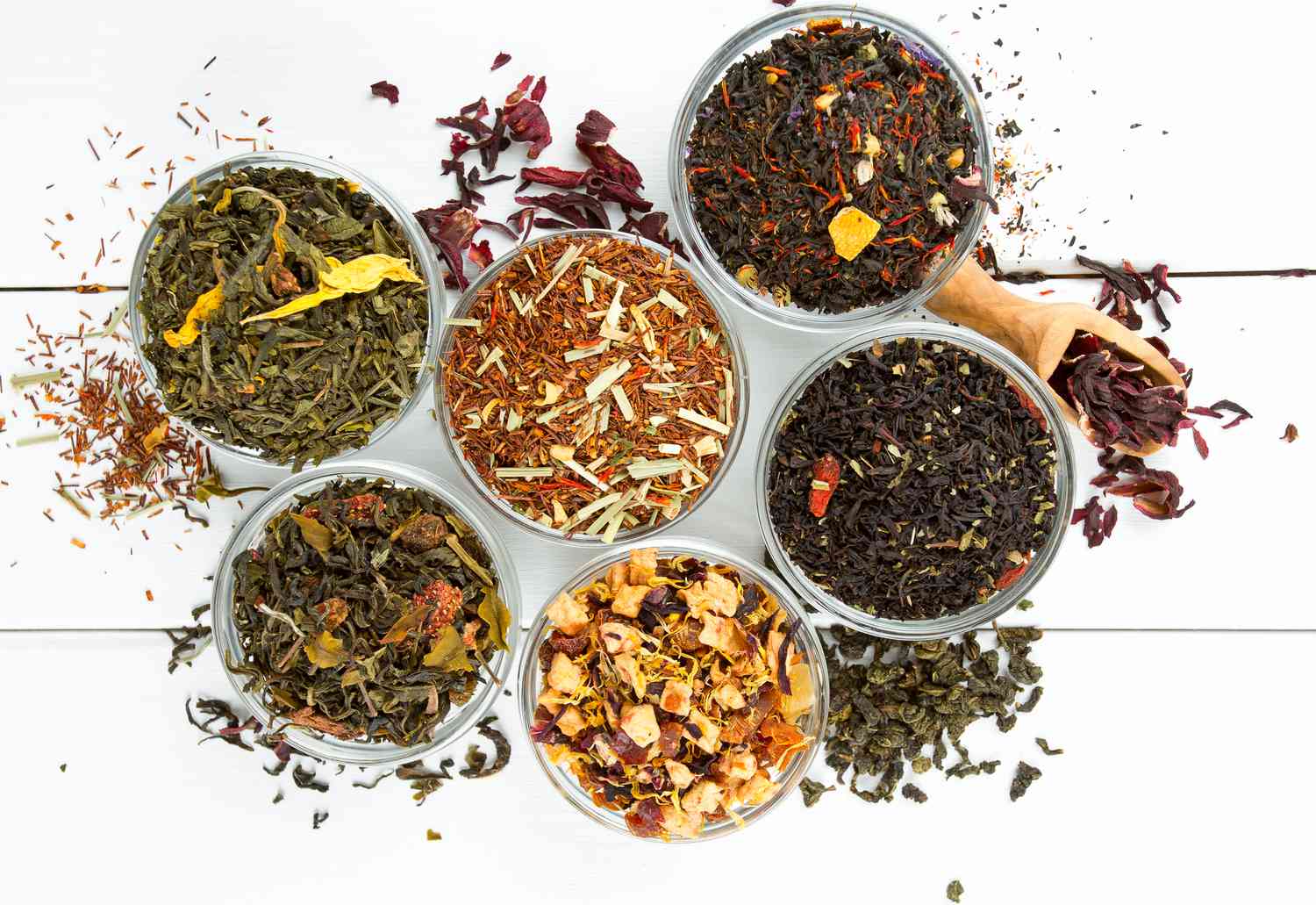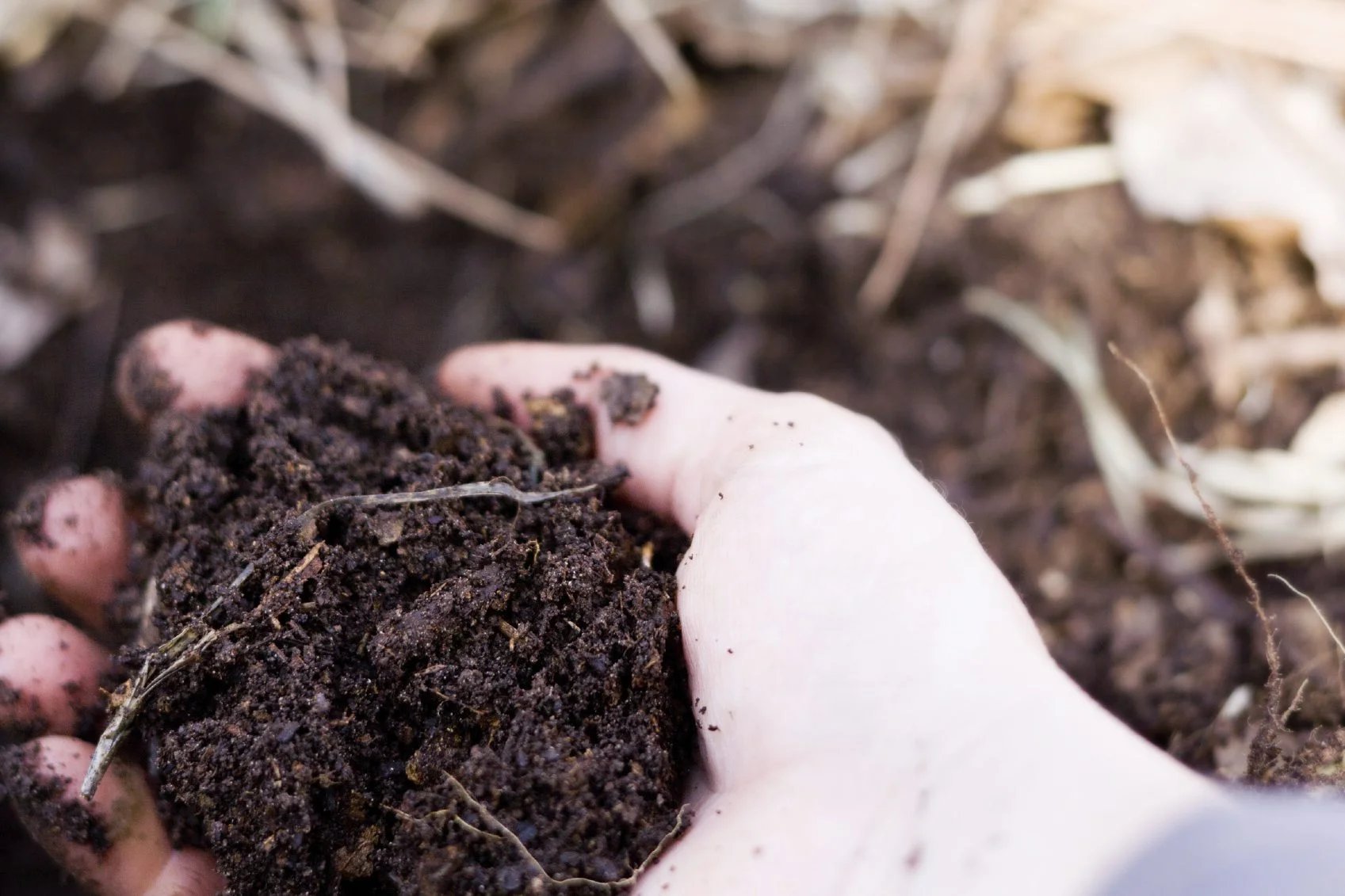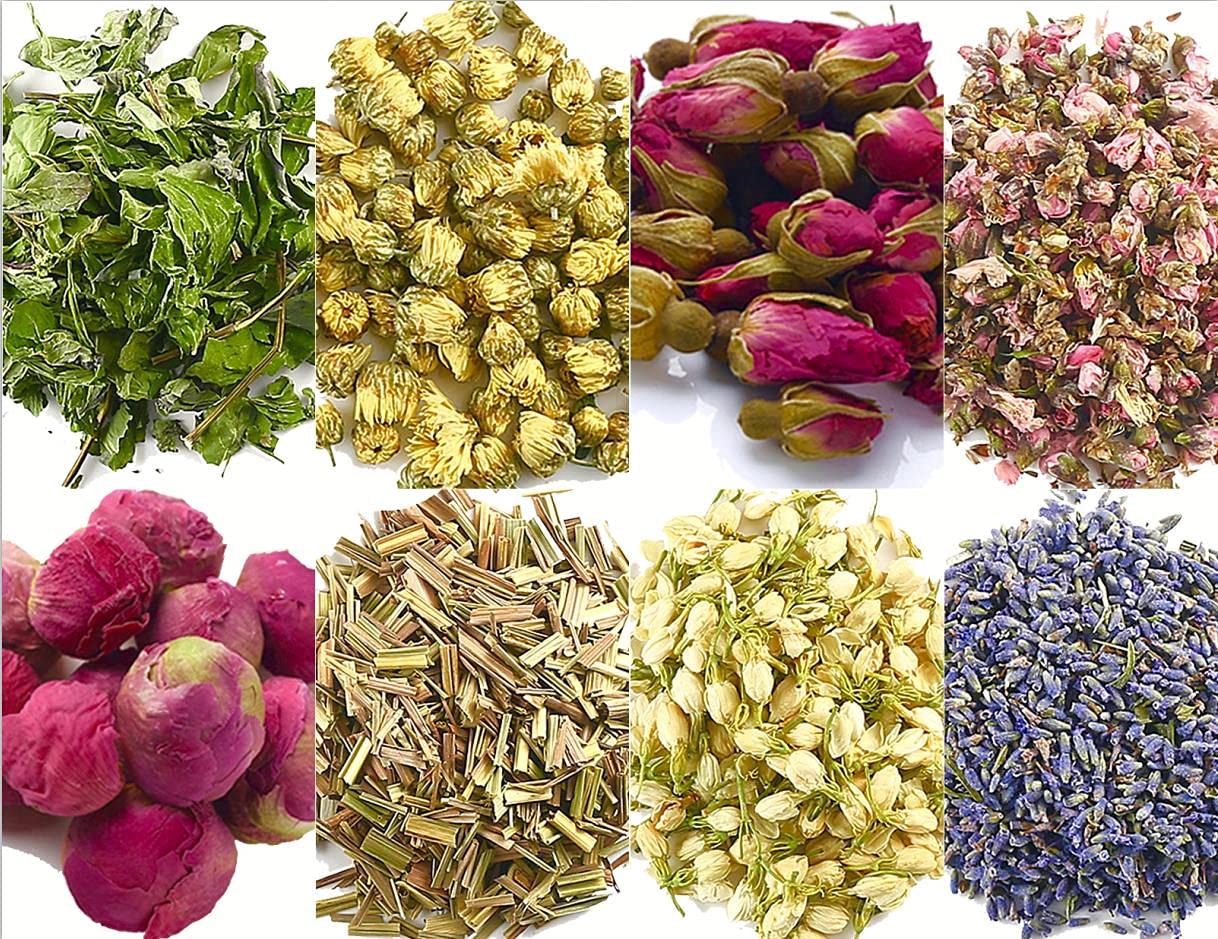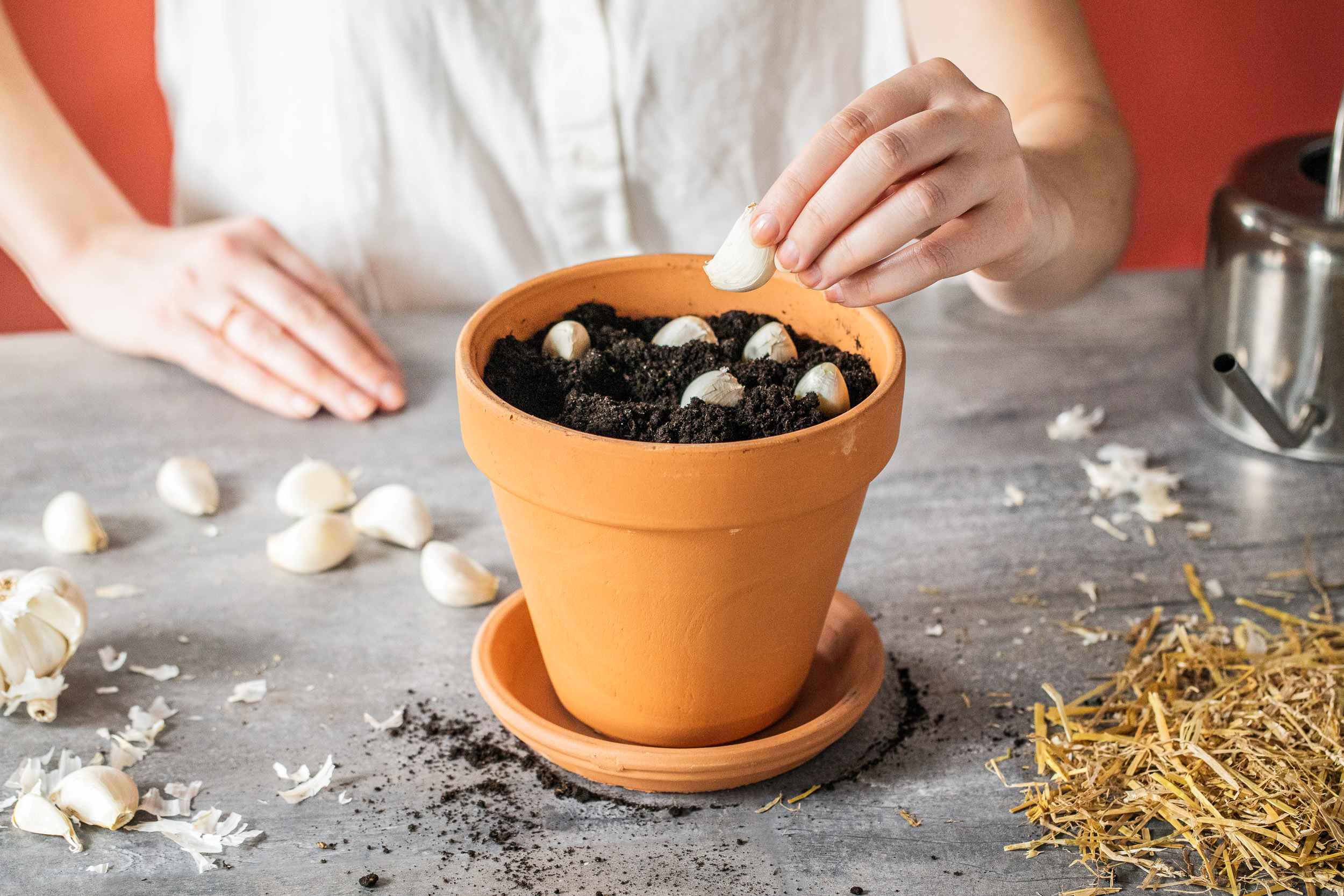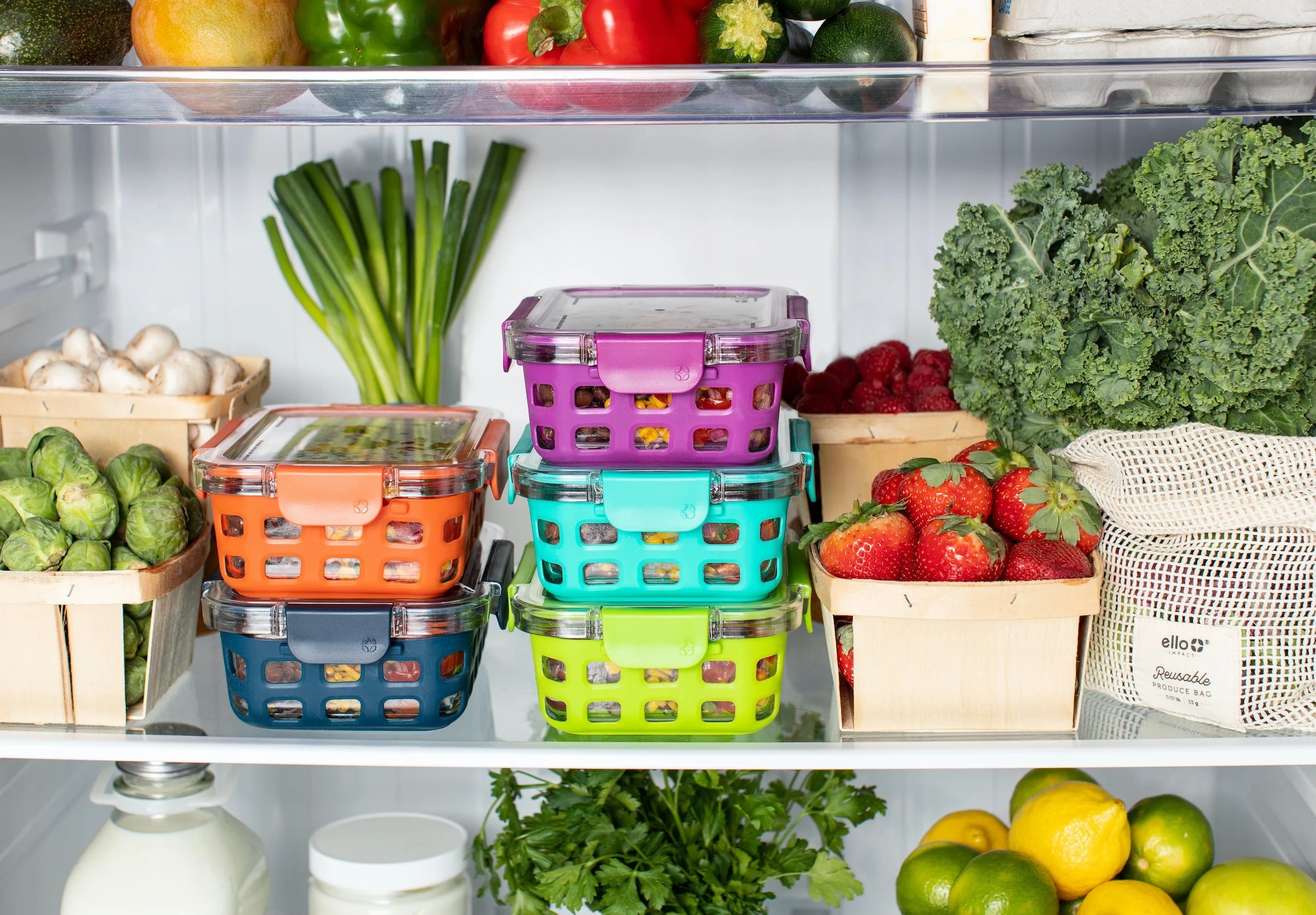Home>Gardening News and Trends>Latest News>How To Store Dried Herbs
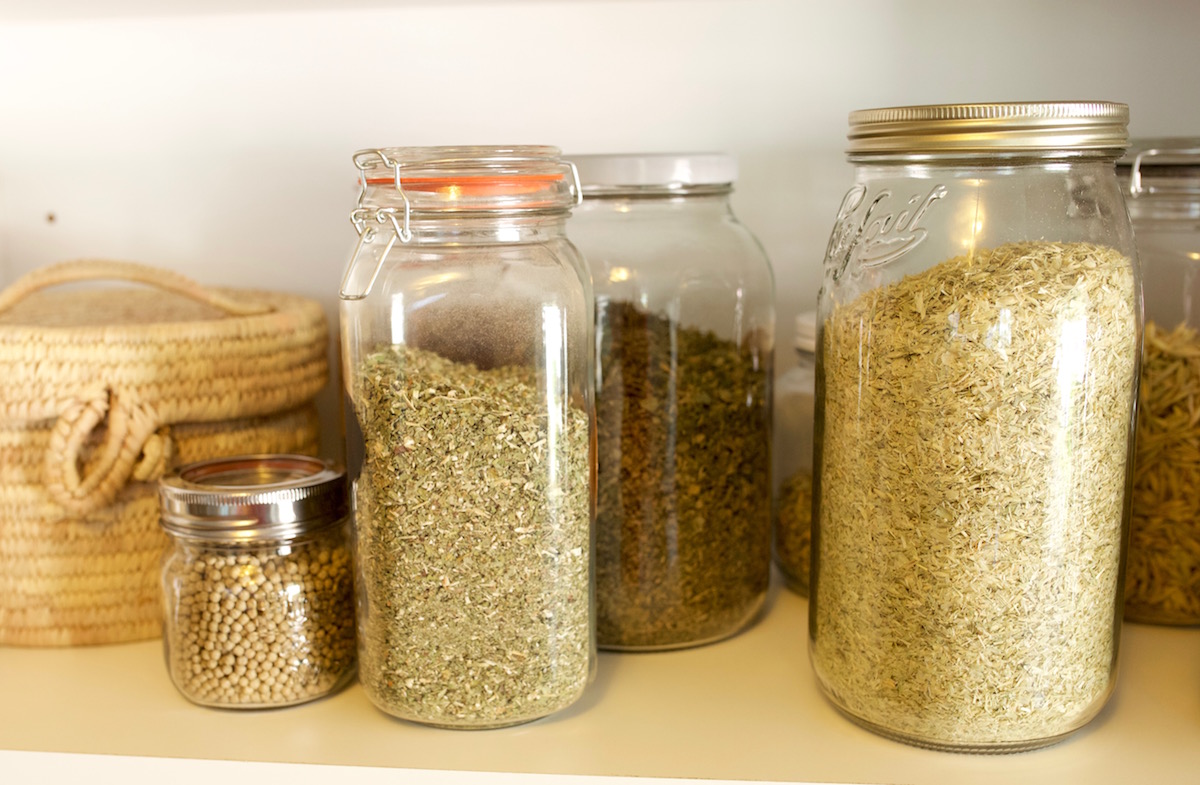

Latest News
How To Store Dried Herbs
Modified: January 22, 2024
Discover the latest news on how to store dried herbs and keep them fresh longer. Learn proper storage techniques and tips for preserving the flavor and aroma of your favorite herbs.
(Many of the links in this article redirect to a specific reviewed product. Your purchase of these products through affiliate links helps to generate commission for Chicagolandgardening.com, at no extra cost. Learn more)
Table of Contents
- Introduction
- Benefits of Storing Dried Herbs
- Choosing the Right Containers
- Proper Labeling Techniques
- Ideal Storage Conditions
- Avoidance of Moisture and Heat
- Organizing and Maintaining Your Herb Collection
- Shelf Life of Dried Herbs
- Testing Herb Freshness
- Reviving and Rehydrating Dried Herbs
- Creative Ways to Use Dried Herbs
- Conclusion
Introduction
Welcome to the world of dried herbs! Whether you are an experienced chef or a passionate home cook, dried herbs are an essential ingredient in your culinary arsenal. Not only do they add a burst of flavor and aroma to your dishes, but they also offer a multitude of health benefits. From enhancing the taste of your favorite recipes to boosting your immune system, storing dried herbs properly is crucial to preserve their freshness and potency.
In this article, we will guide you through the process of storing dried herbs to ensure they remain flavorful and aromatic for an extended period. We will explore the benefits of storing dried herbs, discuss the importance of choosing the right containers, and discover the ideal storage conditions for these precious culinary gems. Lastly, we will share some creative ways to use dried herbs and provide tips for rehydrating them when needed.
Storing dried herbs may seem like a simple task, but it is the key to unlocking their true potential. By following the right storage techniques, you can savor the flavors of these herbs all year round, even if they are out of season. Whether you grow your own herbs or purchase them from the store, storing them properly will ensure that you always have a stash of vibrant and aromatic herbs at your fingertips.
So, let’s explore the world of dried herbs and uncover the secrets of proper storage techniques. Get ready to elevate your culinary creations to new heights and embark on a flavorful journey that will delight your taste buds!
Benefits of Storing Dried Herbs
Properly storing dried herbs offers numerous benefits that go beyond just preserving their flavor and aroma. Here are some of the key advantages:
- Extended Shelf Life: One of the primary benefits of drying and storing herbs is that it significantly extends their shelf life. While fresh herbs typically spoil within a few days, properly dried herbs can retain their flavors and potency for up to a year or more. This means that you can enjoy the flavors of your favorite herbs all year round, regardless of the season.
- Convenience: Storing dried herbs provides convenience and accessibility. Rather than relying on fresh herbs, which may not always be available, you can have a wide range of dried herbs at your disposal whenever you need them. This not only saves you frequent trips to the grocery store but also allows you to experiment with different flavors and recipes effortlessly.
- Enhanced Flavor: Contrary to what some might think, dried herbs can offer an intense and concentrated flavor profile. The drying process intensifies the flavors, making them more pronounced and potent. This depth of flavor allows you to use smaller amounts of dried herbs in your recipes as compared to fresh herbs, thus achieving a more robust and well-balanced taste.
- Versatility: Storing dried herbs provides versatility in cooking. Unlike fresh herbs, which may wilt or lose their flavor after prolonged cooking, dried herbs can withstand longer cooking times without losing their aromatic qualities. This makes them an excellent choice for slow-cooked dishes, stews, marinades, and soups where the flavors have time to infuse and develop.
- Cost Savings: Another advantage of storing dried herbs is the potential for cost savings. Fresh herbs can be expensive, especially when they are out of season. By purchasing or drying your own herbs and storing them properly, you can save money and still enjoy the incredible flavors and health benefits they offer.
With these benefits in mind, it’s evident that storing dried herbs is a worthwhile endeavor. Not only does it provide convenience and cost savings, but it also ensures that you always have access to a wide array of flavorful herbs, enhancing the taste and appeal of your culinary creations.
Choosing the Right Containers
When it comes to storing dried herbs, choosing the right containers is crucial to maintain their freshness and quality. Here are some factors to consider when selecting containers for your dried herbs:
- Material: Opt for containers made of glass or metal, such as mason jars or metal tins. These materials are non-porous and will not absorb moisture or odors from the herbs, ensuring that they stay fresh and flavorful.
- Airtight Seal: Look for containers with airtight seals to prevent air and moisture from entering. Exposure to air can cause herbs to deteriorate and lose their potency quickly. A tight seal helps to maintain the herbs’ flavor and aroma for a longer period.
- Size: Choose containers that are appropriate for the quantity of dried herbs you plan to store. It’s best to use smaller-sized containers to minimize the air space inside, as this can accelerate the degradation of herbs. If you have a large amount of herbs, consider using multiple smaller containers rather than one large container.
- Transparency: Transparent containers, such as glass jars, allow you to easily see the contents without opening the container. This helps in quickly identifying the herb you need and avoids unnecessary exposure to air and light.
- Dark Color: If transparent containers are not available, opt for containers with dark colors, such as amber or dark green. These colors help to minimize exposure to light, which can degrade the herbs’ quality and potency over time.
- Labels: Ensure that the containers can be easily labeled. Clearly labeling each container with the name of the herb and the date of storage will help you keep track of its freshness and prevent any mix-ups.
By selecting the appropriate containers for your dried herbs, you can create an optimal storage environment that preserves their flavor, aroma, and quality. Remember, investing in high-quality containers will go a long way in ensuring that your herbs remain fresh and potent for an extended period.
Proper Labeling Techniques
Labeling your dried herbs may seem like a small detail, but it plays a crucial role in maintaining organization and ensuring you use them at their peak freshness. Here are some proper labeling techniques to consider:
- Name of the Herb: Clearly write the name of the herb on each container. This will help you easily identify the herb you need without having to open multiple containers. Use a legible font size and ensure the label is securely attached to the container.
- Date of Storage: It’s essential to record the date when the herbs were dried and stored. This will help you keep track of each herb’s freshness and determine when it’s time to replenish your supply. Use a permanent marker or labels with ample space to write the date.
- Additional Information: Consider adding any additional information that may be relevant to the specific herb, such as the region it was grown in or any special characteristics. This information can be helpful if you have multiple varieties of the same herb or if you want to remember specific details about its source
- Storage Instructions: If there are any specific storage instructions unique to a particular herb, include them on the label. For example, some herbs may benefit from being stored in a cool, dark place, while others may require airtight containers to preserve their delicate flavors.
- Organizational System: Establish an organizational system that works best for you. This could be arranging the containers alphabetically, by herb family, or by frequency of use. Having a consistent and logical organization will make it easier for you to locate and access the herbs when needed.
- Regular Updates: It’s essential to update your labels whenever you refill or replace dried herbs in a container. This ensures accurate information and prevents confusion about the freshness and identity of each herb.
By following proper labeling techniques, you can easily identify and locate the herbs you need, track their freshness, and maintain an organized herb collection. Taking a little extra time to label your containers will pay off when you can effortlessly find and use your dried herbs in your culinary creations.
Ideal Storage Conditions
Proper storage conditions are crucial for maintaining the quality and longevity of your dried herbs. Here are some factors to consider when selecting the ideal storage conditions:
- Temperature: Dried herbs should be stored in a cool environment. Ideally, the temperature should be between 60°F and 70°F (15°C-21°C). Avoid storing herbs near sources of heat, such as stovetops or ovens, as exposure to high temperatures can cause them to lose their flavor and potency quickly.
- Light: Light is another important factor to consider when storing dried herbs. Exposure to direct sunlight or bright artificial light can degrade the quality and color of herbs. Therefore, it’s best to store herbs in a dark or dimly lit area, such as a pantry or cupboard.
- Humidity: Herbs are highly susceptible to moisture, as it can cause them to lose their potency and spoil. It’s essential to store dried herbs in a dry environment with low humidity levels. Avoid storing them in areas such as the refrigerator, where moisture can accumulate.
- Air Circulation: While it’s important to prevent excess air exposure, some air circulation is crucial to prevent the growth of mold or mildew. Ensure that the storage area has adequate ventilation to promote airflow without exposing the herbs to drafts or strong air currents.
- Avoiding Contamination: To maintain the quality of your dried herbs, ensure that the storage area is free from odors and potential contaminants. Strong-smelling items such as spices, onions, or cleaning products can permeate the herbs, affecting their flavor and aroma.
- Keep Whole Herbs Intact: If you are storing whole dried herbs, it’s best to leave them intact until ready to use. Crushing or grinding the herbs should be done just before using them to preserve their freshness and potency. This helps to maintain the essential oils and flavors within the herb leaves.
By selecting an ideal storage location with appropriate temperature, light, humidity, and ventilation, you can ensure that your dried herbs remain in optimal condition for an extended period. Following these guidelines will help preserve their flavors, aromas, and beneficial properties, allowing you to enjoy the full potential of your dried herb collection.
Avoidance of Moisture and Heat
Moisture and heat are the enemies of dried herbs. Exposure to these elements can cause herbs to lose their flavor, aroma, and beneficial properties quickly. To ensure the longevity of your dried herbs, it’s vital to take measures to avoid moisture and heat. Here’s how:
- Properly Drying Herbs: Drying herbs properly is the first step in avoiding moisture-related issues. Ensure that your herbs are completely dry before storing them. Any residual moisture can lead to mold or spoilage. You can use various methods to dry herbs, such as air drying, oven drying, or using a dehydrator.
- Choose the Right Containers: As mentioned earlier, selecting the right containers is crucial to prevent moisture from reaching your herbs. Opt for airtight containers made of glass or metal to ensure a moisture-free environment. Make sure the containers are completely dry before adding your dried herbs.
- Avoiding Moisture Sources: Keep your dried herbs away from sources of moisture, such as water, steam, or high humidity areas in the kitchen. Storing herbs near the sink, dishwasher, or in cabinets above the stove can expose them to additional moisture, reducing their shelf life.
- Use Silica Gel Packets: Placing silica gel packets in your herb containers can help absorb any moisture that may be present. These small packets are commonly found in packaging for electronic devices or certain food products. They help to keep the humidity level low and protect your herbs from moisture damage.
- Store Away from Heat Sources: Avoid storing dried herbs near heat sources, such as ovens, stovetops, or radiators. Heat can cause the herbs to deteriorate quickly and lose their potency. Instead, choose a cool and dry location to store your herbs away from any direct sources of heat.
- Avoid Freezing Dried Herbs: While freezing is a common method of preserving foods, it is not recommended for dried herbs. Freezing can introduce moisture into the herbs, which can lead to freezer burn or ice crystals forming. This can significantly impact the quality and flavor of the herbs. It’s best to store dried herbs at room temperature.
By taking precautions to avoid moisture and heat, you can ensure that your dried herbs retain their flavors, aromas, and beneficial properties for an extended period. This will allow you to enjoy the vibrant taste and fragrance of your herbs in your favorite dishes with confidence.
Organizing and Maintaining Your Herb Collection
Organizing and maintaining your herb collection is essential for easy access and ensuring the freshness of your dried herbs. Here are some tips to help you keep your herb collection in order:
- Categorize by Type: Group your dried herbs by type or herb family. This will make it easier to locate specific herbs when you need them. For example, you can organize herbs such as basil, parsley, and mint in one group, while grouping herbs like rosemary, thyme, and sage in another.
- Alphabetical Order: Alphabetical order is a simple and effective way to organize your herbs. Arrange them in alphabetical order within each category. This ensures that you can quickly find the specific herb you need without searching through your entire collection.
- Clear Labels: Ensure that your containers are labeled clearly with the name of the herb and the date of storage. Use legible fonts or consider using pre-printed labels for a clean and professional look. Clear labels make it easier to locate herbs and keep track of their freshness.
- Regular Inventory Check: Regularly check your herb collection for freshness and quality. As herbs age, they may lose their flavor and potency. Consider reviewing your collection every few months and removing any herbs that have passed their prime. This will prevent using herbs that have lost their flavor and ensure that you have space for new additions.
- Rotate and Use Your Herbs: To ensure that your herbs stay fresh, make an effort to use them regularly. Rotate your herbs by using the older ones first and replacing them with newer batches. This will help prevent waste and ensure that your herbs are always at their freshest.
- Proper Storage Space: Allocate a specific area or shelf exclusively for your herb collection. This dedicated space will make it easier to organize and maintain your herbs. Choose a cool, dark, and dry location away from moisture, heat, and direct sunlight to ensure the longevity of your herbs.
- Regular Cleaning: Clean your storage area periodically to remove any dust or residue that may accumulate. A clean space helps maintain the quality of your herbs and prevents any unwanted odors or contamination.
By adopting these tips for organizing and maintaining your herb collection, you can ensure that your dried herbs are easily accessible and retain their freshness over time. With a well-organized collection, you can effortlessly incorporate flavorful herbs into your culinary creations and elevate the taste of your dishes.
Shelf Life of Dried Herbs
The shelf life of dried herbs can vary depending on various factors, including the type of herb, the drying method used, and how they are stored. While dried herbs can last longer than fresh herbs, it’s important to understand their shelf life to ensure optimal flavor and potency:
As a general guideline, most dried herbs can retain their flavor and quality for about 1 to 3 years. However, some herbs may start to lose their potency after the first year, while others can remain flavorful for several years if stored properly.
It’s essential to check the freshness of your dried herbs periodically. Over time, herbs may lose their vibrant color and aromatic scent, indicating a decrease in their flavor and potency. If you notice any signs of discoloration, a muted aroma, or a weak flavor, it’s a good indication that the herbs are past their prime and should be replaced.
It’s worth noting that whole dried herbs tend to retain their flavor and potency longer than crushed or ground herbs. Crushing or grinding herbs exposes more surface area, causing them to lose their flavors more quickly. To ensure the longest shelf life, it’s best to keep herbs whole and crush or grind them just before use.
Proper storage is crucial in extending the shelf life of dried herbs. Storing them in airtight containers, in a cool and dry place away from heat, light, and moisture, helps preserve their quality for a longer period. Regularly checking your herb collection for freshness and rotating herbs to use older ones first also helps maintain their flavor and potency.
It’s important to note that while dried herbs may still be safe to consume after their optimal shelf life, their flavors and aromas may have significantly diminished. Using fresh or recently dried herbs will yield the best results in terms of flavor and fragrance.
By understanding the shelf life of dried herbs and practicing proper storage techniques, you can enjoy the full flavor and benefits of your herbs, making your culinary creations truly exceptional.
Testing Herb Freshness
Testing the freshness of your dried herbs is crucial to ensure that they still possess their desired flavors and aromas. Here are some simple methods to determine the freshness of your herbs:
- Visual Inspection: Start by visually inspecting your dried herbs. Look for any signs of discoloration or fading. Fresh herbs should maintain their vibrant colors, so if you notice any dullness or changes in hue, it may indicate that the herbs have lost some of their freshness.
- Aromatic Evaluation: One of the easiest ways to test herb freshness is through their scent. Rub a small amount of the dried herb between your fingers or palms to release its aroma. Fresh herbs should have a strong and distinct smell. If the herb lacks a pronounced aroma or has a musty or stale scent, it may be past its prime.
- Taste Test: Another reliable method is to taste the dried herb. Take a small amount of the herb and gently chew it. Fresh herbs should impart a strong and vibrant flavor. If the herb tastes weak, stale, or lacks the characteristic taste associated with that herb, it is likely not fresh.
- Compare with Fresh Herb: If you have access to the fresh version of the herb, make a side-by-side comparison between the dried herb and the fresh herb. Pay attention to the color, aroma, and taste of both samples. If the dried herb falls short in terms of these qualities compared to the fresh herb, it may be time to replace it.
- Check for Moisture: Assess the dryness of the herb. Dried herbs should be completely dry and brittle. If you find any signs of moisture or clumping, it indicates that the herbs have absorbed moisture and may have lost their potency.
It’s important to remember that dried herbs may still be safe for consumption even if they have lost some freshness. However, using fresh and flavorful herbs will elevate the taste and aroma of your dishes. If your dried herbs fail any of these freshness tests, it’s advisable to replace them with new batches to ensure optimal flavor and quality.
By regularly evaluating and testing the freshness of your dried herbs, you can maintain a high standard for your culinary creations and enjoy the full potential of these flavorful ingredients.
Reviving and Rehydrating Dried Herbs
There may come a time when you need to revive or rehydrate your dried herbs to restore their texture and maximize their flavor. Here are some methods to bring dried herbs back to life:
- Soaking: For herbs with larger leaves like basil or mint, soaking in water can help rehydrate them. Place the dried herb in a bowl of cool water and let it sit for 10-15 minutes. The herb will absorb some moisture and regain a softer texture. After soaking, gently pat the herb dry with a paper towel before using it.
- Steaming: Steaming is an effective method to revive dried herbs with more delicate leaves, such as cilantro or parsley. Place the herbs in a steamer basket or a colander, then hold it over a pot of simmering water. Allow the steam to work its magic for a few minutes, then remove the herbs and gently pat them dry before incorporating them into your dish.
- Infusing in Oil or Stock: Another way to rehydrate dried herbs is to infuse them in oil or stock. Heat the oil or stock in a saucepan and add the dried herbs. Allow them to simmer gently for a few minutes, which will help soften and rehydrate the herbs. Strain out the herbs before using the infused liquid in your recipe.
- Blending: If you need to incorporate dried herbs into a sauce, dressing, or blend, it may be beneficial to grind them into a finer powder using a spice grinder or mortar and pestle. This will help the dried herbs blend more easily into the mixture and distribute their flavor evenly.
- Crushing or Grinding: In some cases, simply crushing or grinding your dried herbs can help revitalize their aroma and flavor. Gently crush or grind the herbs using a mortar and pestle or a spice grinder to release their essential oils and revive their potency.
While these methods can bring dried herbs back to life, it’s important to note that rehydrated herbs may have a slightly different texture from fresh herbs. They may still offer a burst of flavor and aroma, but the texture may not be the same as that of fresh herbs. Adjust your expectations accordingly and modify your recipes as needed.
Reviving and rehydrating dried herbs can be a great way to incorporate their vibrant flavors into your dishes, even when fresh herbs may not be readily available. By using these techniques, you can make the most out of your dried herb collection and create delicious culinary masterpieces.
Creative Ways to Use Dried Herbs
Dried herbs are incredibly versatile and can be used in a variety of creative ways to enhance the flavors of your dishes. Here are some creative ideas to inspire you:
- Infused Olive Oil: Create your own flavored olive oils by infusing them with dried herbs. Add a few sprigs of dried rosemary, thyme, or basil to a bottle of olive oil and let it infuse for a week. The resulting herb-infused oil can be used in dressings, marinades, or drizzled over grilled vegetables.
- Herb Butter or Compound Butter: Mix your favorite dried herbs into softened butter to create herb butter or compound butter. This flavorful spread can be used to elevate the taste of bread, steaks, fish, or poultry. Simply spread it over grilled meats or veggies for an extra burst of flavor.
- Homemade Seasoning Blends: Combine different dried herbs along with spices and salt to create your own unique seasoning blends. Use these blends to season meats, vegetables, or soups. Experiment with different combinations to suit your taste preferences.
- Flavorful Marinades: Add dried herbs to your marinades to infuse your meats or tofu with delicious flavors. Create a marinade using dried oregano, thyme, garlic powder, and olive oil for a Mediterranean-inspired dish. Let the meat marinate for a few hours or overnight to develop rich flavors.
- Herb-infused Vinegar: Similar to infused oils, you can create herb-infused vinegar by adding dried herbs to a bottle of vinegar. Choose herbs like tarragon, dill, or thyme and let them infuse for a couple of weeks. The resulting herb-infused vinegar can be used in salad dressings or as a flavorful ingredient in your cooking.
- Aromatic Herb Sachets: Create aromatic herb sachets by placing a combination of dried herbs, such as lavender, rosemary, and mint, into a small fabric pouch. Use these sachets to freshen up your linens, closets, or cars. They also make lovely homemade gifts.
- Herb Salt or Sugar: Combine dried herbs with salt or sugar to create flavored salts or sugars. Sprinkle herb salt over roasted vegetables, grilled meats, or popcorn. Use herb sugar in baked goods, cocktails, or to sweeten tea or coffee.
- Flavorful Soups and Stews: Dried herbs are a staple in soups and stews, providing depth and complexity to the flavors. Add dried bay leaves, thyme, or parsley to your simmering broths and enjoy the aromatic essence they bring to your hearty dishes.
- Herb-infused Honey: Combine dried herbs with honey to create a unique and flavorful herb-infused honey. Use it as a sweetener in teas, drizzle it over desserts, or brush it over grilled fruits for a delicious twist.
These are just a few creative ways to use dried herbs. Let your culinary imagination run wild and experiment with different combinations and techniques. Dried herbs have the power to transform ordinary dishes into extraordinary culinary delights, so embrace their versatility and savor the incredible flavors they offer.
Conclusion
Storing dried herbs properly is essential to maintain their flavors, aromas, and beneficial properties. By following the guidelines outlined in this article, you can ensure that your dried herbs remain fresh and potent for an extended period.
Choosing the right containers, properly labeling your herbs, and creating an ideal storage environment are key factors in preserving the quality of dried herbs. Avoiding moisture and heat, organizing your herb collection, and regularly testing herb freshness are also important steps to maintaining the best quality.
Reviving and rehydrating dried herbs opens up a world of possibilities, allowing you to infuse their vibrant flavors into your culinary creations. Get creative by experimenting with herb-infused oils, compound butters, homemade seasoning blends, and more. Dried herbs can elevate the taste of your dishes and provide a burst of aroma and complexity.
Remember to regularly check the shelf life of your dried herbs and replace any that have lost their freshness. By using fresh and high-quality herbs, you can ensure that your culinary creations are bursting with flavor.
So, embrace the world of dried herbs and let their tantalizing flavors and aromas enrich your cooking. With proper storage, care, and creativity, your dried herb collection will be a prized asset in your kitchen. Enjoy the magic of dried herbs and take your dishes to new heights!


